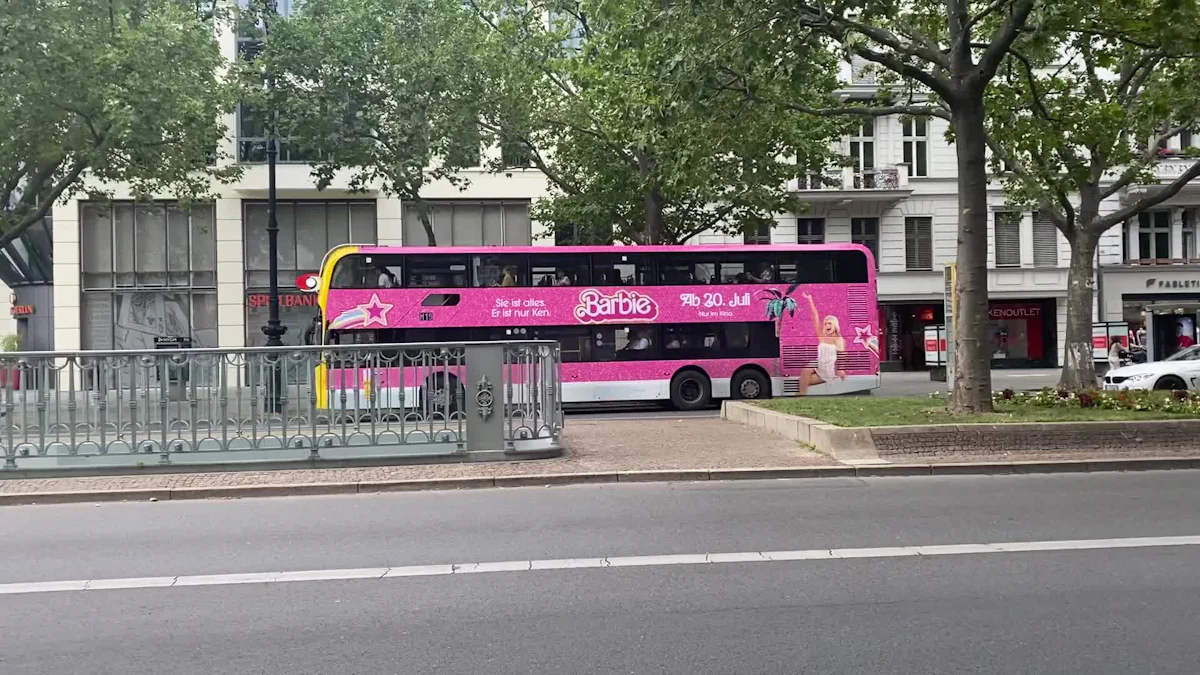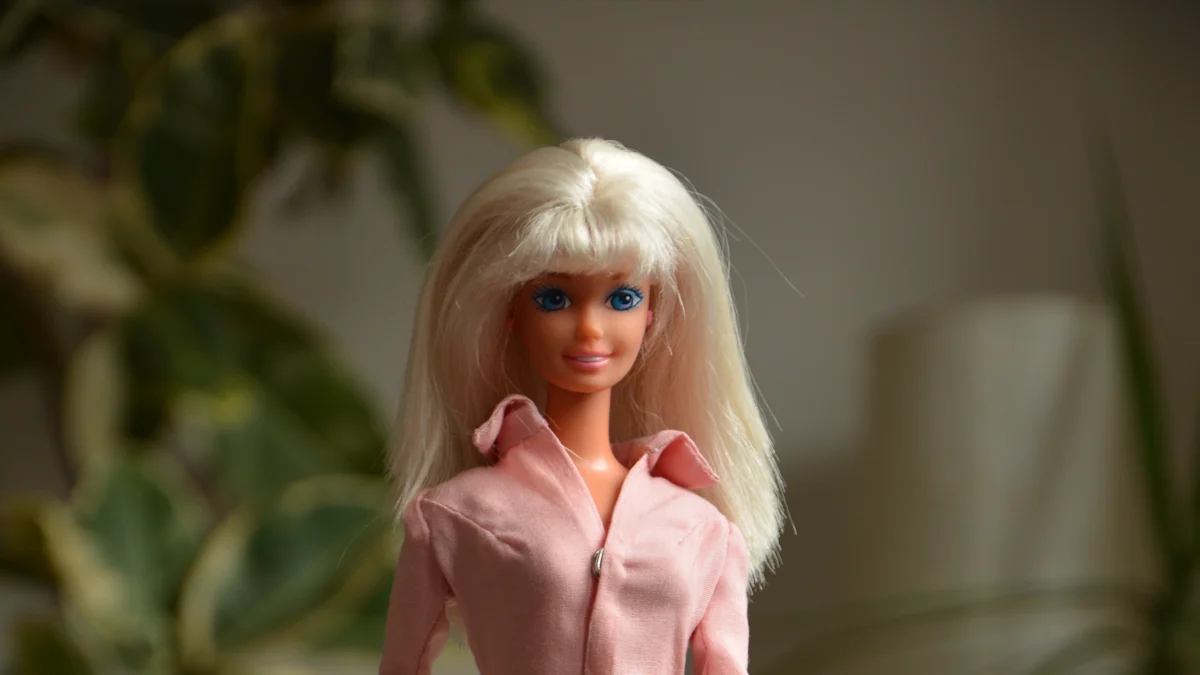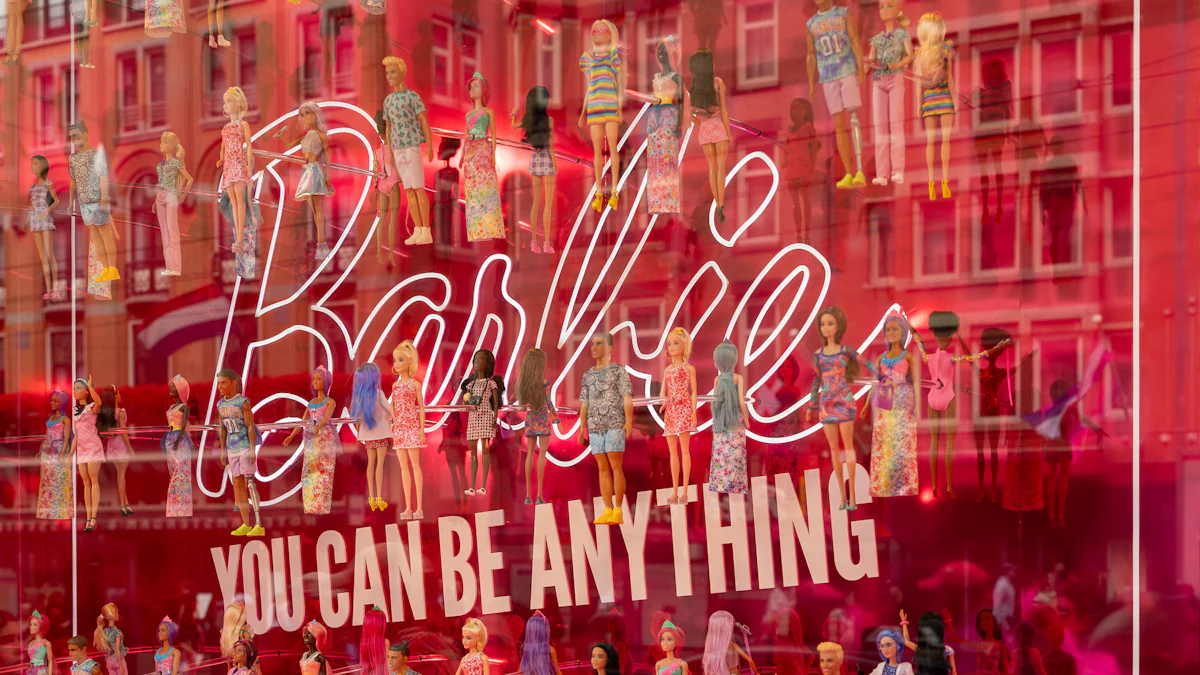Analyzing Barbie's Influence on Modern Marketing

Barbie has become a cultural icon, influencing modern marketing strategies in profound ways. As a pioneer in barbie influencer marketing, Barbie has set the stage for how brands engage with audiences today. Over 90% of girls own a Barbie, showcasing her widespread appeal and impact. This iconic doll has not only driven sales but also inspired empowerment among young girls. The recent Barbie movie further highlights her enduring relevance, tapping into nostalgia while leveraging innovative marketing strategies. Barbie's journey exemplifies how a well-crafted marketing strategy can transform a product into a beloved cultural phenomenon.
Historical Context of Barbie's Marketing Evolution
The Birth of Barbie and Initial Marketing Strategies
In 1959, the world witnessed the birth of Barbie, a doll that would soon become a cultural icon. You might wonder how a simple doll could achieve such status. The answer lies in its innovative marketing strategies. Initially, Barbie's creators focused on television commercials, a novel approach at the time. These commercials captivated young audiences, making Barbie a must-have toy. The strategy was simple yet effective: show Barbie in various roles, from a fashion model to a career woman, sparking the imagination of children everywhere.
Barbie's early marketing didn't just sell a doll; it sold a lifestyle. By portraying Barbie in diverse roles, the brand encouraged young girls to dream big and imagine endless possibilities. This approach not only boosted sales but also laid the groundwork for Barbie's enduring influence on consumer behavior. The initial marketing strategies set the stage for Barbie's evolution into a brand that transcends generations.
Transition to Digital and Social Media Platforms
As technology advanced, so did Barbie's marketing strategies. You have likely noticed how Barbie has seamlessly transitioned into the digital age. The brand embraced social media platforms, creating engaging content that resonates with today's tech-savvy audience. This shift allowed Barbie to maintain its relevance in a rapidly changing market.
Barbie's omnichannel marketing strategy blends physical and digital experiences, offering a seamless brand journey. For instance, the brand uses social media to launch interactive campaigns, encouraging user-generated content. This approach not only amplifies Barbie's reach but also fosters a sense of community among fans. The recent Barbie movie exemplifies this strategy, using nostalgia to connect with audiences while leveraging digital platforms for promotion.
Moreover, Barbie's collaborations with various brands have expanded its visibility. By partnering with companies across different industries, Barbie has tapped into new markets and demographics. These collaborations, often tied to limited-edition releases, create excitement and anticipation among consumers. The Barbie movie's marketing campaign, with its record-breaking success, highlights the power of strategic partnerships in modern marketing.
Modern Marketing Strategies Inspired by Barbie

Barbie's marketing journey offers valuable insights into modern strategies that resonate with today's audiences. By examining how Barbie has adapted and thrived, you can uncover effective techniques for engaging consumers in the digital age.
Multi-Platform Engagement
Barbie's marketing strategy thrives on multi-platform engagement, ensuring the brand remains relevant across various channels.
Leveraging Various Social Media Channels
You might notice how Barbie effectively uses social media to connect with diverse audiences. Platforms like Instagram, TikTok, and YouTube serve as vital tools in barbie influencer marketing. By creating content tailored to each platform, Barbie reaches different demographics, from young children to nostalgic adults. This approach not only maintains Barbie's presence but also enhances her visibility in a crowded market.
Creating Interactive Content
Interactive content plays a crucial role in Barbie's marketing strategy. You can see how Barbie encourages user participation through challenges, polls, and interactive stories. These activities engage users, fostering a sense of community and belonging. For instance, the barbie movie utilized interactive campaigns to captivate audiences, inviting them to share their own Barbie-inspired creations. This strategy not only boosts engagement but also strengthens brand loyalty.
Influencer Collaborations
Influencer collaborations have become a cornerstone of Barbie's marketing efforts, amplifying her reach and impact.
Successful Campaign Examples
Barbie's influencer marketing strategy includes partnerships with popular personalities who align with the brand's values. You might recall campaigns where influencers showcased Barbie's diverse range of dolls, highlighting themes of empowerment and inclusivity. These collaborations have proven successful, generating buzz and excitement around new releases. The barbie movie, for example, partnered with influencers to create exclusive content, further enhancing its appeal.
Impact on Brand Visibility
Influencer collaborations significantly impact Barbie's brand visibility. By leveraging the followers of influencers, Barbie taps into new audiences and expands her reach. This strategy not only increases awareness but also reinforces Barbie's position as a leader in the toy industry. Through strategic partnerships, Barbie continues to inspire and engage consumers worldwide.
The Role of Social Media and Influencer Partnerships in Barbie Influencer Marketing

Barbie's marketing success owes much to its strategic use of social media and influencer partnerships. These strategies have amplified Barbie's reach, making her a prominent figure in the world of influencer marketing. By leveraging the power of social media, Barbie has managed to stay relevant and influential across generations.
Amplifying Barbie's Reach through Influencers
Influencers play a crucial role in expanding Barbie's audience. They bring authenticity and relatability to the brand, which resonates with diverse demographics.
Case Studies of Influencer Partnerships
Barbie's collaboration with influencers has been a game-changer. For instance, during the promotion of the Barbie movie, the marketing team strategically partnered with influencers who embody empowerment and self-expression. These influencers shared their personal connections to Barbie, often dressing in iconic Barbie-pink outfits. This approach created an authentic buzz that went beyond traditional marketing strategies. By sharing their stories and experiences, influencers helped to reinforce Barbie's message of empowerment and gender equality.
Strategies for Engaging Target Audiences
To engage target audiences effectively, Barbie employs several strategies. First, the brand selects influencers whose values align with Barbie's empowerment-centric messaging. This alignment ensures that the content feels genuine and resonates with followers. Second, Barbie encourages influencers to create content that highlights the brand's core values, such as empowerment and gender equality. This strategy not only amplifies Barbie's message but also fosters a sense of community among fans.
The Power of User-Generated Content
User-generated content (UGC) is another powerful tool in Barbie's social media marketing arsenal. By encouraging fans to share their own Barbie-inspired creations, the brand taps into the creativity and enthusiasm of its audience. This approach not only boosts engagement but also strengthens brand loyalty. Fans feel a sense of ownership and connection to the brand, which enhances their overall experience.
Financial Impact and Brand Collaborations in Barbie Marketing
Barbie's marketing strategy has not only captivated audiences but also significantly boosted financial growth. You can see how strategic partnerships and collaborations have played a crucial role in this success. By aligning with various brands, Barbie has expanded its reach and tapped into new revenue streams.
Revenue Growth through Strategic Partnerships
Barbie's collaborations with fashion brands have been a game-changer. These partnerships have introduced limited-edition merchandise, including clothing, accessories, and collectibles. You might notice how these exclusive releases create a sense of urgency and excitement among consumers. This approach not only generates additional revenue but also reinforces Barbie's relevance in the fashion industry.
Collaborations with Fashion Brands
Fashion brands have found value in partnering with Barbie. These collaborations often result in unique collections that blend Barbie's iconic style with contemporary fashion trends. You can see how these partnerships attract both Barbie enthusiasts and fashion-forward individuals. By offering exclusive items, Barbie maintains its status as a cultural icon while driving sales.
Limited Edition Releases
Limited edition releases have become a hallmark of Barbie's marketing strategy. You might recall how these releases create buzz and anticipation among fans. By offering products in limited quantities, Barbie taps into the power of scarcity, encouraging consumers to act quickly. This strategy not only boosts sales but also enhances brand loyalty, as collectors eagerly seek out these rare items.
Long-term Brand Loyalty and Consumer Engagement
Barbie's well-executed marketing strategies have fostered long-term brand loyalty. You can see how the brand's focus on empowerment and nostalgia resonates with consumers. By promoting themes of empowerment, Barbie inspires individuals to embrace their unique identities. This message strengthens the emotional connection between the brand and its audience.
Barbie's record-breaking success in recent years highlights the effectiveness of its marketing strategies. The brand's value reached approximately 720 million U.S. dollars in 2024, reflecting its enduring appeal. You might notice how the Barbie movie contributed to this growth by leveraging nostalgia and innovative marketing techniques. This success underscores the importance of a well-crafted marketing strategy in maintaining brand relevance.
Barbie's influence on marketing trends is undeniable. Her strategies, rooted in personalization and inclusivity, have kept her relevant for decades. By embracing nostalgia, Barbie connects with both new and long-time fans. Her innovative marketing tactics, such as smart collaborations and storytelling, set a standard that many brands strive to emulate. Barbie's ability to adapt to cultural shifts ensures her place as a beloved icon. Her journey highlights the power of empowerment and nostalgia in creating lasting brand loyalty and cultural impact.
FAQ
What makes Barbie's marketing strategy so effective?
Barbie's marketing strategy thrives on innovation and nostalgia. You see this in the way Barbie evokes emotional childhood memories, triggering a sense of nostalgia that resonates with audiences. The brand also excels in forming strategic collaborations and partnerships, expanding its reach and targeting a wider audience. These tactics have made Barbie a topic of discussion among marketers for years.
How has Barbie maintained its relevance over the years?
Barbie stays relevant by continuously adapting to cultural shifts and embracing new marketing trends. The brand's ability to personalize and include diverse representations keeps it appealing to a broad audience. By leveraging social media and influencer partnerships, Barbie connects with both new and long-time fans, ensuring its place as a beloved icon.
What role do collaborations play in Barbie's marketing success?
Collaborations are a cornerstone of Barbie's marketing success. Mattel, Barbie's parent company, has partnered with over 100 brands, showcasing the doll's expansive allure. These collaborations often result in exclusive product drops, which keep Barbie at the forefront of popular culture and drive consumer excitement.
How does Barbie use social media to engage with audiences?
Barbie effectively uses social media platforms like Instagram, TikTok, and YouTube to connect with diverse audiences. By creating content tailored to each platform, Barbie reaches different demographics. Interactive campaigns, challenges, and user-generated content foster a sense of community and belonging among fans.
What impact did the Barbie movie have on the brand's marketing?
The Barbie movie set new standards for promotional practices. Its marketing campaign utilized over 100 brand partnerships and collaborations with popular influencers to amplify its reach. This approach not only boosted the movie's success but also reinforced Barbie's position as a leader in the toy industry.
How do influencer collaborations enhance Barbie's brand visibility?
Influencer collaborations significantly enhance Barbie's brand visibility. By partnering with influencers who align with the brand's values, Barbie taps into new audiences and expands her reach. This strategy increases awareness and reinforces Barbie's status as a cultural icon.
What is the significance of user-generated content in Barbie's marketing?
User-generated content (UGC) plays a crucial role in Barbie's marketing strategy. By encouraging fans to share their own Barbie-inspired creations, the brand taps into the creativity and enthusiasm of its audience. This approach boosts engagement and strengthens brand loyalty, as fans feel a sense of ownership and connection to the brand.
How do limited edition releases contribute to Barbie's success?
Limited edition releases create buzz and anticipation among fans. By offering products in limited quantities, Barbie taps into the power of scarcity, encouraging consumers to act quickly. This strategy not only boosts sales but also enhances brand loyalty, as collectors eagerly seek out these rare items.
What lessons can marketers learn from Barbie's marketing strategies?
Marketers can learn several lessons from Barbie's marketing strategies. Emphasizing personalization and inclusivity keeps a brand relevant. Leveraging nostalgia connects with audiences on an emotional level. Strategic collaborations and storytelling set a standard for engaging consumers. Barbie's journey highlights the power of empowerment and nostalgia in creating lasting brand loyalty and cultural impact.
See Also
Exploring How TikTok Influences Modern Social Media Trends
Essential TikTok Influencer Marketing Tactics for 2024
The Benefits and Drawbacks of TikTok Influencer Marketing
Genuine Reviews of TikTok Influencer Marketing Agencies
Guidelines for Identifying TikTok Influencers Aligned with Your Brand
